Nestled in the heart of the Himalayas, Leh stands as a beacon of spirituality and culture, drawing travelers from across the globe. This high-altitude desert city in Ladakh is renowned for its breathtaking landscapes and, most notably, its ancient Buddhist monasteries. These spiritual sanctuaries not only offer a glimpse into centuries-old traditions but also provide a serene escape from the hustle of modern life. Join us on a journey through Leh’s most iconic monasteries, where history, spirituality, and stunning architecture converge to create an unforgettable experience.
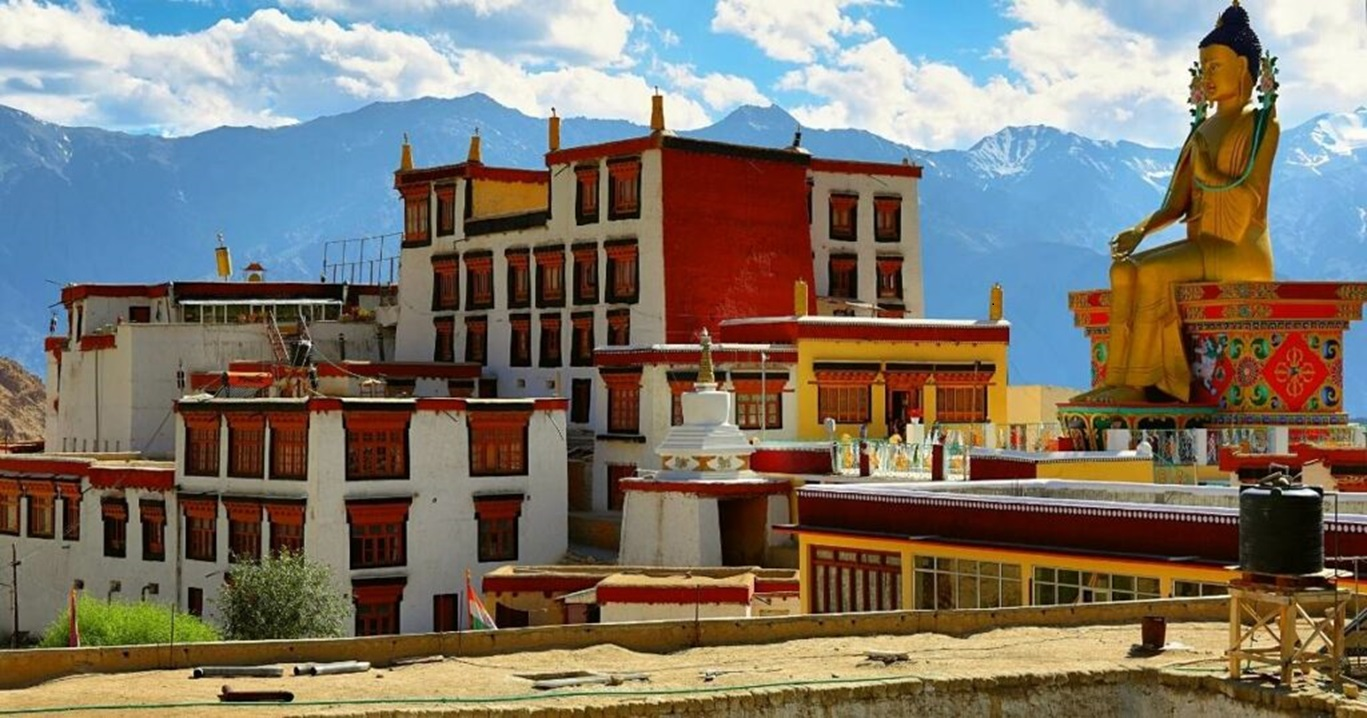
Why Leh’s Monasteries Are Globally Revered
Leh’s monasteries, or ‘gompas’, are more than just religious institutions; they are living museums of Tibetan Buddhist culture. Perched on hilltops and cliffs, these structures have withstood the test of time, preserving ancient wisdom and artistry. Their remote locations and spiritual ambiance make them perfect retreats for those seeking inner peace and cultural enlightenment.
Top Monasteries to Explore in Leh
1. Hemis Monastery: A Treasure Trove of History and Festivity
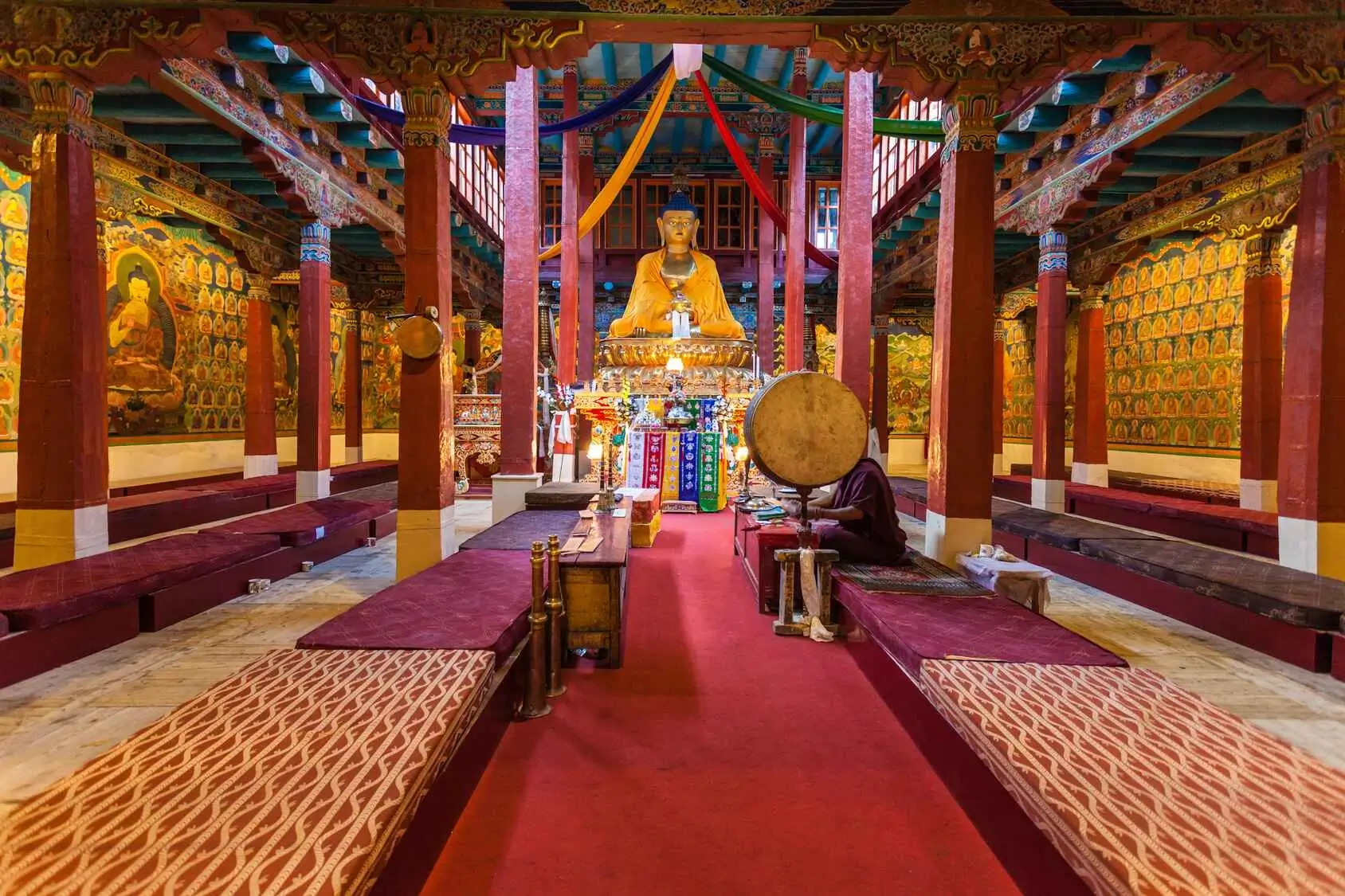
Hemis Monastery, the largest and wealthiest monastery in Ladakh, dates back to 1630 AD. Known for its colorful architecture and vast collection of ancient relics, Hemis is a must-visit for any traveler in Leh.
Hemis Festival: A Spectacular Cultural Celebration
The annual Hemis Festival, held in June or July, is a vibrant celebration of Guru Padmasambhava’s birth anniversary. The festival features:
- Cham dance performances by monks in colorful masks and costumes
- Display of a giant thangka (Buddhist painting) of Guru Padmasambhava
- Traditional music and local handicraft exhibitions
This two-day extravaganza offers a unique opportunity to immerse yourself in Ladakhi culture and Buddhist traditions.
2. Thiksey Monastery: The Mini Potala Palace
Often referred to as the ‘Mini Potala Palace’ due to its resemblance to its namesake in Lhasa, Thiksey Monastery is a architectural marvel spread over 12 stories.
Highlights of Thiksey:
- A stunning 49-foot statue of Maitreya Buddha, the future Buddha
- Panoramic views of the Indus Valley
- An extensive collection of Buddhist art, including statues, stupas, and thangkas
The early morning prayer ceremony at Thiksey is a soul-stirring experience, with the sound of horns and chanting monks echoing through the valley.
3. Diskit Monastery: Guardian of the Nubra Valley**
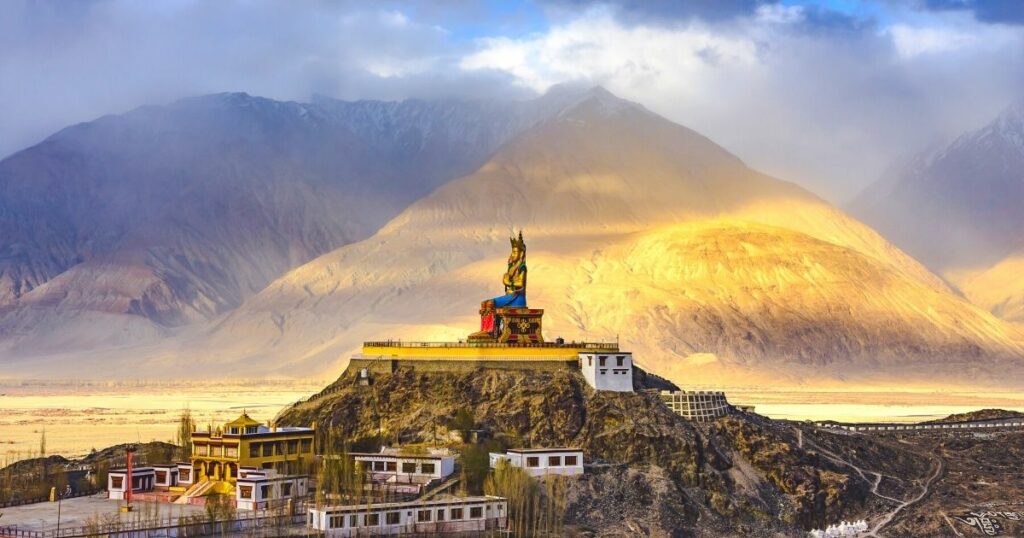
Perched atop a hill in the Nubra Valley, Diskit Monastery offers a unique blend of spiritual and natural beauty.
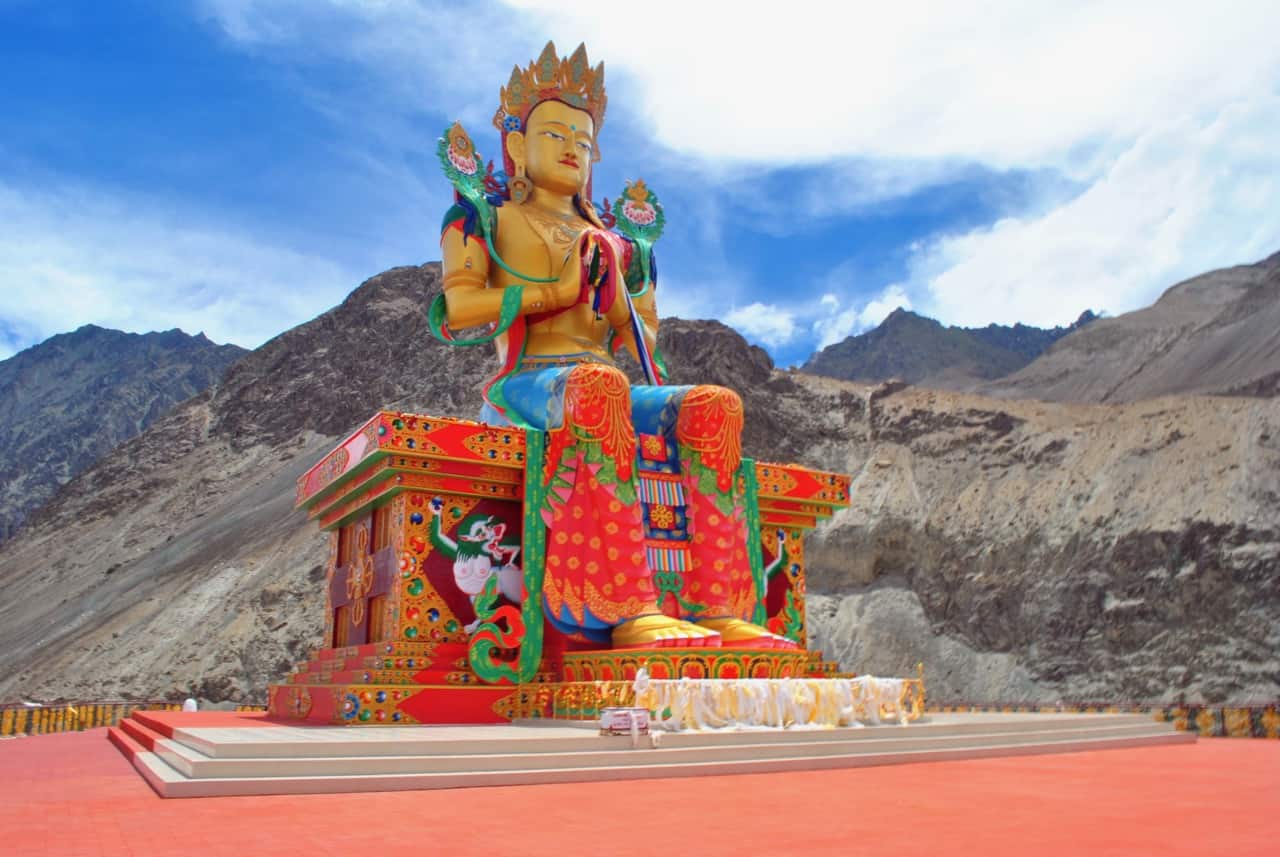
Key Features:
- The iconic 32-meter Maitreya Buddha statue, visible for miles around
- Breathtaking views of the Nubra Valley and its sand dunes
- Ancient murals and frescoes depicting Buddhist mythology
A visit to Diskit is often combined with a trip to the Nubra Valley, famous for its double-humped Bactrian camels and stark, beautiful landscapes.
Cultural Insights: Understanding Buddhist Life in Leh
Leh’s monasteries are not just tourist attractions; they are living centers of Buddhist culture and spirituality. Understanding the rituals and traditions observed here can greatly enrich your visit.
Buddhist Rituals and Daily Life
- Morning Prayers: Many monasteries start their day with prayer sessions open to visitors.
- Butter Tea Ceremony: Monks often share butter tea, a traditional Tibetan drink, with visitors.
- Meditation Sessions: Some monasteries offer guided meditation for tourists.
Traditional Art in Monasteries
Leh’s monasteries are treasure troves of Tibetan Buddhist art:
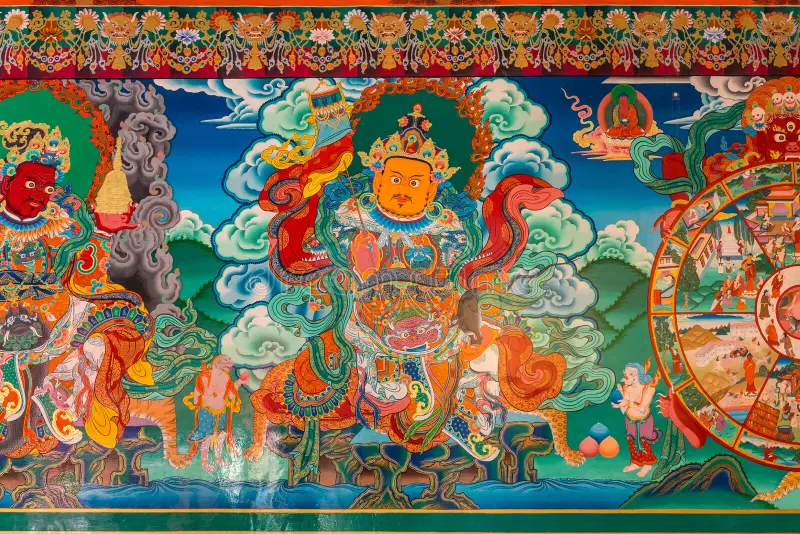
- Thangkas: Intricate paintings on cotton or silk depicting Buddhist deities and philosophies.
- Mandalas: Geometric designs representing the Buddhist cosmos.
- Sand Paintings: Temporary artworks created as a meditation practice.
Festivals and Celebrations
Apart from the Hemis Festival, other notable monastic celebrations include:
- Losar: Tibetan New Year, celebrated with masked dances and rituals.
- Gustor: An annual festival featuring sacred dances and the destruction of evil forces.
Travel Tips for Visiting Leh’s Monasteries
Best Time to Visit
The ideal time to visit Leh and its monasteries is from May to September. This period offers:
- Pleasant weather and clear skies
- Accessibility to all monasteries (some are closed during winter)
- Opportunity to witness major festivals
Etiquette and Respect
When visiting these sacred spaces, it’s crucial to:
- Dress modestly, covering shoulders and knees
- Remove shoes before entering prayer halls
- Ask permission before taking photographs, especially of monks or inside temples
- Maintain silence and turn off mobile phones in prayer areas
Engaging with Local Guides
Hiring a local guide can significantly enhance your monastery experience:
- Gain deeper insights into Buddhist philosophy and local customs
- Learn about the historical and cultural significance of various artifacts
- Navigate language barriers and complex monastery layouts
Beyond Monasteries: Completing Your Leh Adventure
While monasteries are the spiritual heart of Leh, the region offers much more:
- Pangong Lake: A stunning high-altitude lake famous for its changing colors.
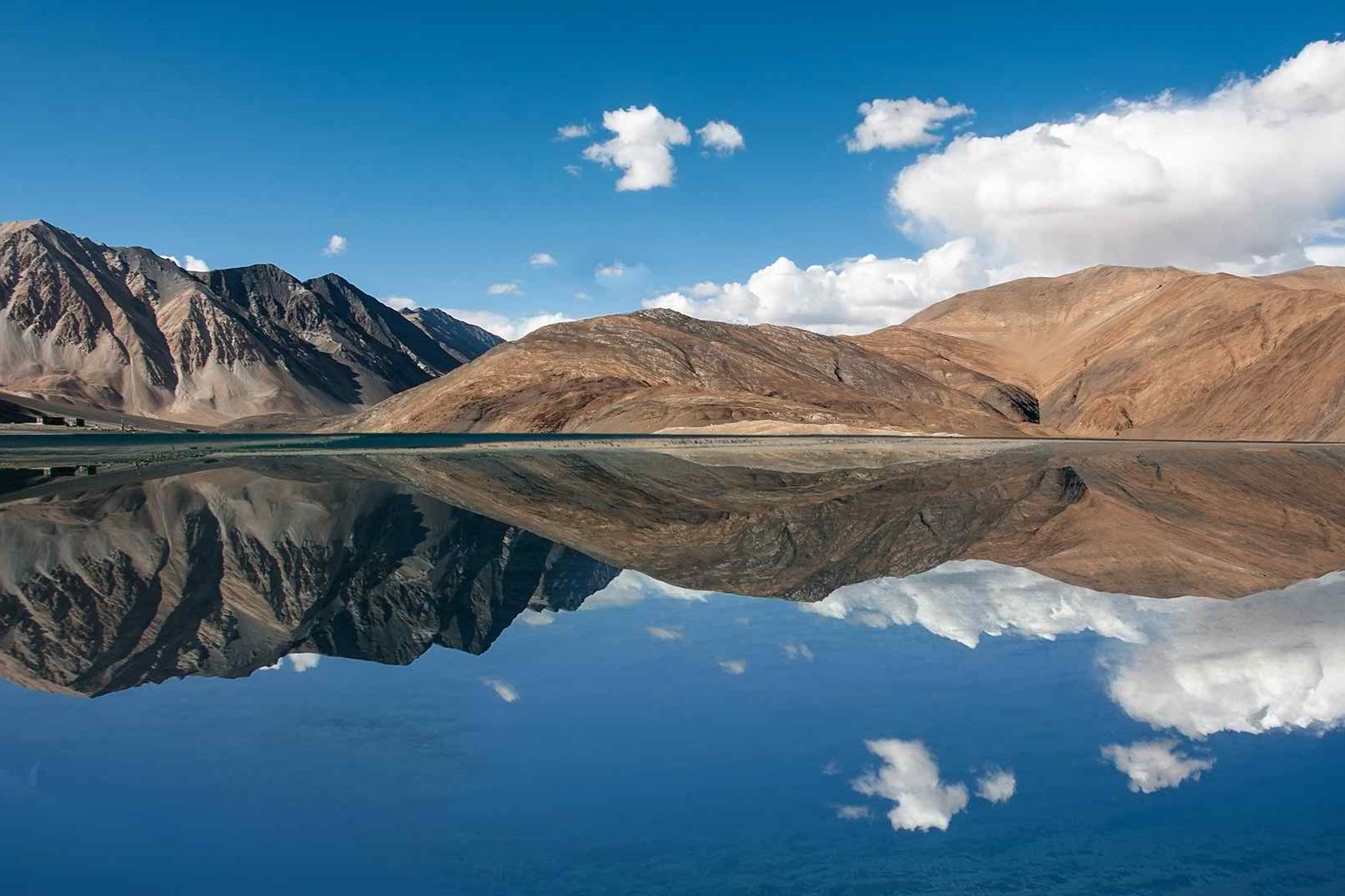
- Nubra Valley: Known for its sand dunes and Bactrian camels.
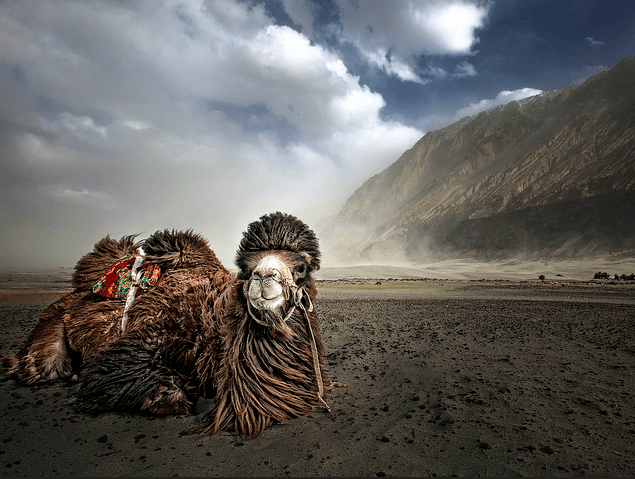
- Magnetic Hill: A natural wonder where vehicles appear to move uphill against gravity.
- Leh Palace: A former royal residence offering panoramic views of the city.
Combining these attractions with your monastery tour creates a well-rounded Ladakh experience.
Conclusion: Embark on Your Spiritual Journey
Leh’s monasteries offer more than just a tourist experience; they provide a gateway to spiritual awakening and cultural immersion. From the grand festivals of Hemis to the serene beauty of Thiksey and the majestic Buddha of Diskit, each monastery tells a unique story of faith, resilience, and artistic brilliance.
As you plan your adventure to this Himalayan wonderland, remember that every prayer flag, every chant, and every ancient mural holds centuries of wisdom and devotion. Let the mystical energy of Leh’s monasteries guide you on a journey of self-discovery and cultural exploration.
Ready to embark on this spiritual odyssey? Let Baha be your guide to the wonders of Leh and its iconic monasteries. Book your adventure today and prepare for an experience that will stay with you long after you’ve descended from the Himalayan heights.
FAQs About Leh’s Monasteries
- Q: Are all monasteries in Leh open to tourists?
A: Most major monasteries are open to tourists, but some may have restricted areas or specific visiting hours. It’s best to check in advance or go with a local guide. - Q: Can I stay overnight in a monastery?
A: Some monasteries offer basic accommodation for visitors. Hemis and Thiksey are known to have guest houses, but availability may be limited. - Q: Is photography allowed inside the monasteries?
A: Photography is generally allowed in outdoor areas and main halls, but may be restricted in certain sacred spaces or during ceremonies. Always ask for permission first. - Q: How physically demanding are visits to these monasteries?
A: Many monasteries are located at high altitudes and may involve climbing stairs. It’s advisable to acclimatize to the altitude before attempting strenuous activities. - Q: Can I witness a Buddhist ceremony during my visit?
A: Yes, many monasteries have daily prayer sessions open to visitors. Festivals like Hemis offer more elaborate ceremonies and performances.